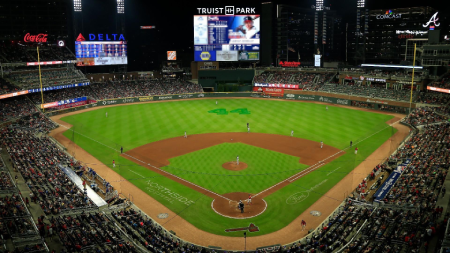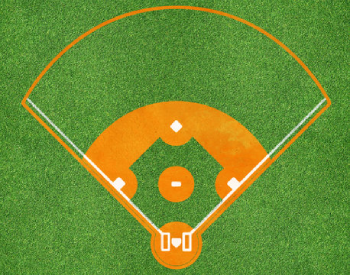
When people think of baseball, the image that often comes to mind is the iconic diamond-shaped layout at the center of the field. This unique configuration is more than just a visual symbol—it’s the foundation upon which the entire game is played. Understanding the diamond in baseball means understanding the structure, flow, and strategy of the sport itself.

Content
What Is the Baseball Diamond?
The baseball diamond refers to the square-shaped arrangement of the four bases—home plate, first base, second base, and third base—set in such a way that it forms a diamond in baseball when viewed from above. These bases are placed 90 feet apart (in Major League Baseball), creating a symmetrical square turned at a 45-degree angle.
The diamond is located within the infield and is the hub of offensive and defensive action during a game. Every run, pitch, and play revolves around this critical zone.
Components of the Baseball Diamond
The diamond in baseball is composed of several key elements:
1. Home Plate
This five-sided rubber slab is where the batter stands and where every run must be scored. It’s also the starting and ending point of every offensive play.
2. First Base
The first of three stops a player must make before returning to home. It’s positioned 90 degrees to the right of home plate from the batter’s perspective.
3. Second Base
Located directly opposite home plate, this base forms the peak of the diamond and is equidistant from both first and third base.
4. Third Base
Found to the batter’s left, third base is the final checkpoint before a runner can score.
5. Pitcher’s Mound
While not a base, the pitcher’s mound is central to the diamond. Positioned 60 feet 6 inches from home plate, it’s where the pitcher stands to deliver each pitch.
The baseball diamond is more than just a layout—it dictates the pace, strategy, and rules of the game.
- Base Running: Players run counter-clockwise from home to first, second, third, and back home to score a run.
- Defensive Positioning: The infielders—first baseman, second baseman, shortstop, and third baseman—are positioned near the bases and within the diamond to field balls and make outs.
- Strategic Play: Many game strategies revolve around base movement, such as bunting, stealing bases, and executing double plays—all of which are governed by the geometry of the diamond.
Standard measurements (for professional baseball) include:

- Base Paths: 90 feet between each base
- Pitcher’s Mound: 60 feet 6 inches from home plate
- Baseline Angles: Each corner forms a 90-degree angle, creating a perfect square when aligned
For younger age groups or amateur leagues, dimensions may be adjusted for age and ability, but the diamond shape remains constant.
Symbolism and Significance
The baseball diamond isn’t just practical—it’s symbolic. It represents structure, tradition, and the cyclical nature of the game. Every play begins and ends at home plate, creating a loop that gives the sport its rhythm. The diamond’s symmetry also reinforces baseball’s balance between offense and defense, speed and patience, risk and reward.
Modifications in Different Formats
While the classic diamond is used in Major League and professional leagues, variations exist:
- Little League: Bases are typically 60 feet apart
- Softball: Base paths are usually 60 feet, with the pitcher’s mound closer to home plate
- Sandlot/Backyard Games: Informal diamonds may have flexible dimensions based on available space
Regardless of the variation, the diamond shape is preserved as a fundamental design.
Conclusion: Why the Diamond Matters
The baseball diamond is the beating heart of the game. Its geometry shapes every moment of play, from the swing of the bat to the slide into home. For players, coaches, and fans alike, understanding the diamond is key to appreciating the strategy, elegance, and timeless appeal of baseball.
Whether you’re watching from the stands, playing in a backyard, or designing your own field, the baseball diamond stands as a lasting symbol of America’s pastime.
Baseball’s essence lies in teamwork, strategy, and passion, captivating fans worldwide. Brands looking to connect with this audience can effectively advertise with us, reaching devoted enthusiasts who live and breathe every pitch and play on the field.
FAQ’s About Diamond in Baseball
1. Why is it called a “diamond” in baseball?
The term “diamond” comes from the shape formed when the four bases—home, first, second, and third—are arranged in a square and rotated 45 degrees. From an overhead view, this layout resembles a diamond, which has become one of the most recognizable features in baseball.
2. How far apart are the bases on a standard baseball diamond?
In Major League Baseball, each base is exactly 90 feet from the next, forming a perfect square. This standard measurement ensures uniformity across all professional fields and influences the timing and challenge of base running and fielding plays.
3. Can the size of the baseball diamond vary?
Yes, the dimensions of a baseball diamond can vary depending on the level of play. For example, Little League diamonds typically have 60-foot base paths, and the pitching distance is shorter than in professional leagues. However, the diamond shape remains consistent across all levels of baseball.

Eldon Barrett’s knowledge of sports is boundless. His in-depth analysis and captivating storytelling will make you see the games you love in a whole new light.

